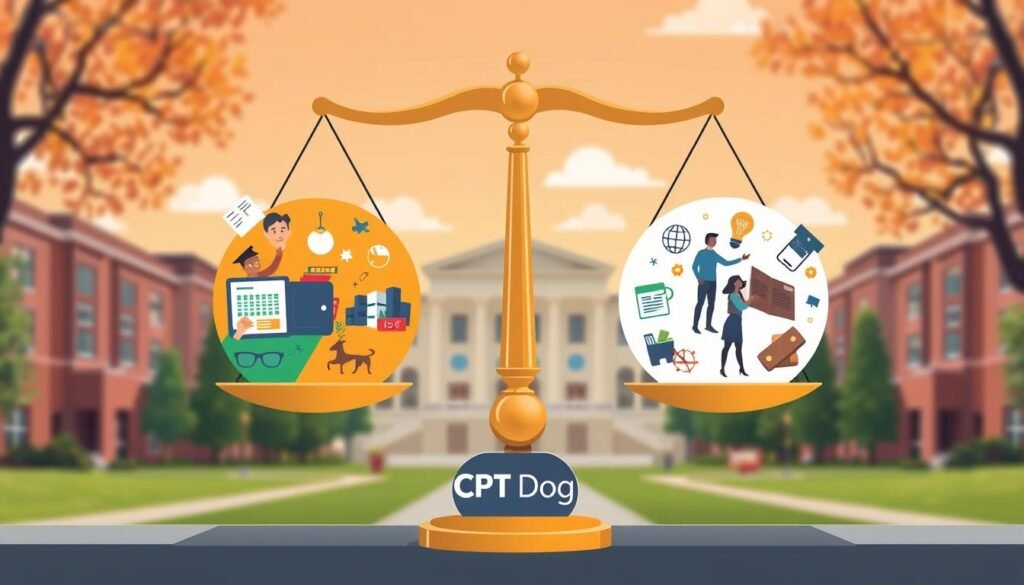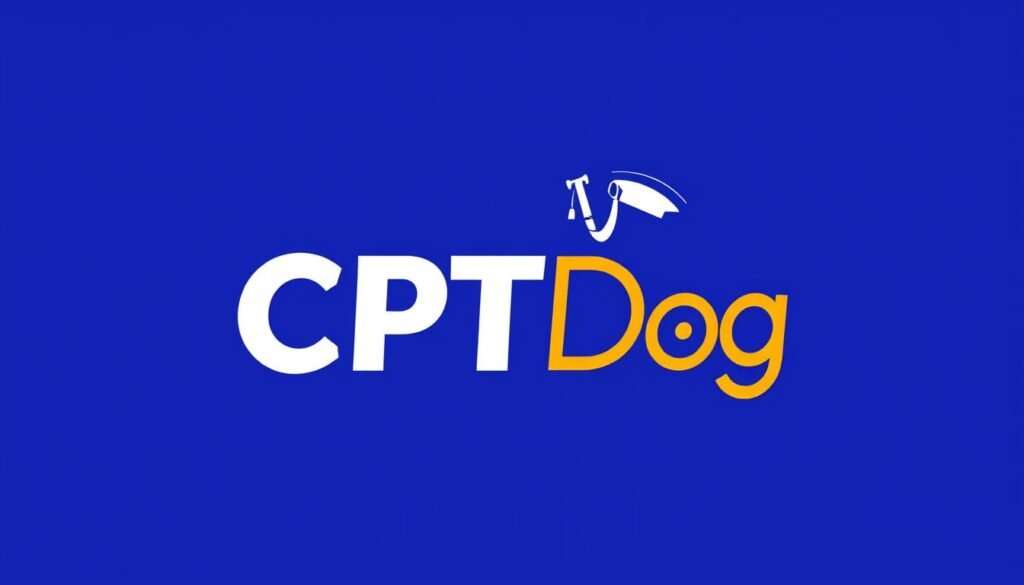If you’re an international student in the U.S., you might have heard about Is Day 1 CPT Legal. But is it really legal? Or is it just too good to be true? It’s important to understand the legality and accreditation rules of Day 1 CPT to succeed in your studies and career.
Key Takeaways
- Is Day 1 CPT Legal – Day 1 CPT is a legal practical training option for eligible F-1 visa students in the U.S.
- Is Day 1 CPT Legal – Legality is based on 8 CFR 214.2(f)(10)(i), which permits immediate CPT for graduate programs requiring practical training from the start
- Authorized by Designated School Officials (DSOs) and must adhere to USCIS policies and immigration regulations
- Is Day 1 CPT Legal – Accreditation of the institution offering Day 1 CPT is crucial for compliance and legal standing
- Understanding the nuances of Day 1 CPT can help international students make informed decisions about their academic and career paths
Understanding Day 1 CPT
Day 1 CPT is a special type of Curricular Practical Training (CPT) for international F-1 students. It lets them start working in their field of study right away. This is different from regular CPT, which usually requires a year of study first.
What is Day 1 CPT?
Day 1 CPT is a special CPT option for international students. It lets them start practical training in their field of study right away. This is great for graduate programs that need students to start working quickly.
How Does Day 1 CPT Work?
To get Day 1 CPT, students must keep their F-1 status and meet their school’s rules. They also need approval from their school’s Designated School Official (DSO). The application process is fast, usually taking 1-3 days. But, it’s important to follow U.S. immigration laws closely to avoid problems later.
| Metric | Statistic |
|---|---|
| Percentage of F-1 visa holders who might opt for Day 1 CPT | 20% |
| Requirement of completing 1 full academic year for traditional CPT authorization | Yes |
| Number of universities offering Day 1 CPT | 50 |
| Average time taken for Day 1 CPT authorization process | 2-3 weeks |
Day 1 CPT helps international students get work experience and earn money. It also makes them more attractive to employers. But, it’s important to follow all rules and guidelines to avoid legal issues.
The Legal Framework of Day 1 CPT
The rules for Day 1 CPT are clear in U.S. Immigration and Customs Enforcement (ICE) guidelines and the Code of Federal Regulations. This type of Curricular Practical Training (CPT) is covered by 8 CFR § 214.2(f)(10)(i). It allows for exceptions to the one-year waiting period for graduate programs.
CPT is different from Optional Practical Training (OPT). It is approved by the school’s Designated School Official (DSO), not USCIS. CPT is part of the curriculum and happens during the degree program. OPT, on the other hand, happens after studies are finished.
Regulations Governing CPT
The rules for CPT are detailed. Full-time CPT means working more than 20 hours a week. Part-time CPT is 20 hours or less. Students must be in F-1 status and have health insurance to be eligible.
Students also need a job offer to apply for CPT. The application process includes getting a Detailed Training Description from the employer. They must also meet with an Academic or Faculty Advisor and submit documents through the M-Passport portal for approval.
Differences Between CPT and OPT
CPT and OPT are both work-authorization options for international students. But they have key differences. CPT is part of the academic program and is approved by the school’s DSO. OPT, however, is approved by USCIS and happens after studies are done.
Using more than 12 months of full-time CPT makes a student ineligible for OPT. This shows how important it is to understand and follow the legal rules for these programs.
| Criteria | CPT | OPT |
|---|---|---|
| Authorization | Authorized by the school’s DSO | Authorized by USCIS |
| Timing | During the degree program | After completion of studies |
| Eligibility Impact | Using more than 12 months of full-time CPT makes a student ineligible for OPT | No impact on CPT eligibility |

Accreditation of Institutions Offering Day 1 CPT
Accreditation is key for Day 1 CPT programs. It means a school meets high academic standards and follows immigration laws. The U.S. Department of Education lists many accrediting bodies for schools. Students should check if their school is accredited on the Department of Education’s website.
Importance of Accreditation
Accredited schools offer real Day 1 CPT programs. These programs focus on healthcare compliance, legal requirements, and CPT code modifiers. They give international students quality education and work experience right from the start.
Recognized Accreditation Bodies
- The Middle States Commission on Higher Education (MSCHE)
- The New England Commission of Higher Education (NECHE)
- The Higher Learning Commission (HLC)
- The Southern Association of Colleges and Schools Commission on Colleges (SACSCOC)
- The Northwest Commission on Colleges and Universities (NWCCU)
- The WASC Senior College and University Commission (WSCUC)
By checking if their school is accredited, international students know they’re in a good program. They get real Day 1 CPT opportunities and follow all healthcare compliance, legal requirements, and CPT code modifiers.
“Accreditation is the foundation for quality assurance in higher education, ensuring that institutions and programs meet acceptable levels of quality.”
– U.S. Department of Education
Common Misconceptions About Day 1 CPT
Day 1 Curricular Practical Training (CPT) is becoming more popular. It’s a way for international students to work in the U.S. But, there are many myths and misunderstandings about it.
Myths vs. Facts
Many think all universities offer Day 1 CPT. But, only some institutions and programs do. The rules for who can use it vary.
Some believe Day 1 CPT is a way to get work authorization easily. But, it’s part of a special curriculum to improve learning.
While Day 1 CPT is legal, misuse can cause big problems. It could affect your future immigration chances. Be careful of programs that focus more on work than learning.
Case Studies and Examples
Here are some examples to show the challenges of Day 1 CPT:
- A student in a Day 1 CPT program at a good university couldn’t find a job that matched their studies. This caused trouble with their visa later.
- Another student chose a Day 1 CPT program at a less well-known school. The program was mostly about getting work authorization, not learning. This student had trouble with their H-1B visa application.
These stories show why it’s key to know all about Day 1 CPT before choosing it. It could affect your future in the U.S.

“While Day 1 CPT can be a valuable option for certain international students, it’s crucial to approach it with caution and ensure that the program aligns with your academic and professional goals.”
By clearing up myths and sharing real stories, students can make better choices. This helps them follow the rules and reach their goals.
Consequences of Misusing Day 1 CPT
Misusing Curricular Practical Training (CPT), especially the Day 1 CPT option, can lead to serious legal and academic problems for international students. It’s vital to know the healthcare compliance, legal requirements, and coding rules. This ensures you stay compliant and avoid any issues.
Legal Implications
Using unauthorized employment or Day 1 CPT wrongly can cause you to lose your F-1 student visa. This could mean you can’t get a visa in the future and might even get deported. The U.S. Citizenship and Immigration Services (USCIS) checks if you really want to study, not just work.
Academic Consequences
Using Day 1 CPT the wrong way can also harm your studies. You might lose your place in the program and your credits. Also, problems with your immigration status could affect your chances for future visas and green cards.
To stay safe, make sure your Day 1 CPT fits with your studies and follows all rules. Picking a Day 1 CPT program from a recognized university helps avoid the bad effects of misuse.
“Compliance with healthcare, legal, and coding requirements is paramount when utilizing Day 1 CPT to ensure a smooth and successful academic and professional journey.”
Navigating Day 1 CPT as an International Student
As an international student in the United States, it’s key to navigate the Day 1 Curricular Practical Training (CPT) program well. This program lets you gain work experience while staying legal. To make it smooth, follow a few important steps.
Steps to Ensure Compliance
Start by picking a school with a good Day 1 CPT program. It should match your study field and career dreams. Work with your Designated School Official (DSO) to get the okay to start your internship or job.
It’s also vital to keep up with your studies and meet your school’s rules. This way, you stay in line with CPT rules.
Studies show that about cpt code guidelines of international students in the U.S. get internship chances through USCIS. By following these steps, you can be one of the coding audits who use Day 1 CPT for their career growth.
Resources for International Students
Use the help available to you during your Day 1 CPT time. Your school’s international student office can guide you through the application and rules. Also, learn about USCIS CPT guidelines and talk to a good immigration lawyer if you need to.